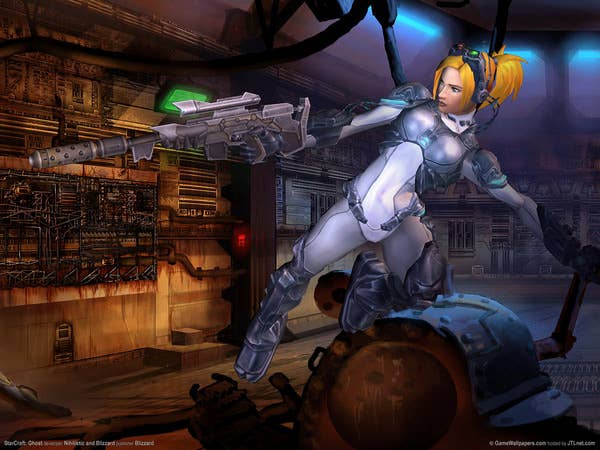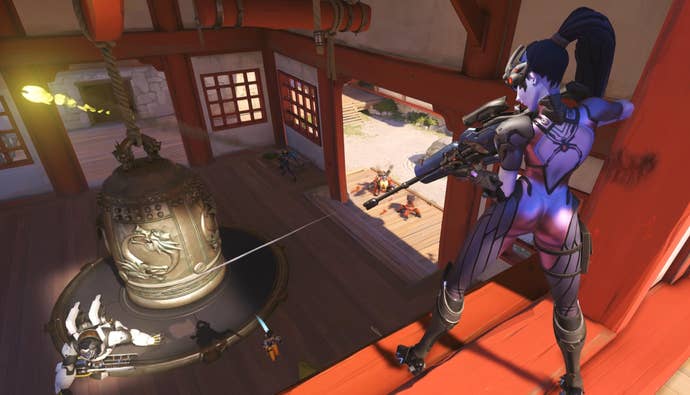From WarCraft Adventures to Overwatch: Why Blizzard's Willingness to Fail is Still Their Greatest Strength
A willingness to endure short-term pain has allowed Blizzard to turn many of their biggest failures into great successes.
This article first appeared on USgamer, a partner publication of VG247. Some content, such as this article, has been migrated to VG247 for posterity after USgamer's closure - but it has not been edited or further vetted by the VG247 team.
In 2012, 38 Studios collapsed under the weight of its unfinished MMORPG, dragging lives, careers, and a good chunk of the state of Rhode Island with it. It was a cautionary tale of how large studios sometimes operate on razor thin margins between outsized success and abject failure.
As all of this was happening, Blizzard was mired in a similar crisis. Even after years of development, Project Titan - a massive MMORPG that was to be their first new IP in years - simply wasn't working. In 2014, Blizzard finally admitted defeat and pulled the plug on the project, sending years of development and millions of dollars down the drain. Ask the studio about it today, and they will call it their greatest failure.

Few publishers could absorb that kind of blow. For every Final Fantasy XIV, which Square Enix resuscitated the year Project Titan was canceled, there are a dozen games like Project Copernicus - projects with the potential to drag down whole companies if they fail. They are the games like APB, Daikatana, and Too Human, all of which were ultimately pushed out the door in a rough state simply because the developer in question needed to put out something. In APB's case, even the game's eventual release wasn't enough to save Realtime Worlds, which went into administration soon afterward.
By contrast, Blizzard seemingly never felt any pressure to release Project Titan. In fact, it was never so much as shown to the press, let alone the general public. Even today, Project Titan remains a mystery. When Blizzard comments on it, the most they will usually say is that it was: 1) A game larger in scope than even World of WarCraft, 2) Their greatest failure. Beyond that, Blizzard prefers to keep that particular skeleton in their closet.
How many publishers can afford to fail on that scale and simply go on without missing a beat? The answer: not many. Square Enix saved Final Fantasy XIV, but only after pulling out all the stops and essentially rebooting the project. By contrast, Blizzard not only went on seemingly without missing a beat, they turned the failure of Titan into Overwatch, which has the potential to be one of the biggest successes of 2016. Not only that, Blizzard's reputation as a gold standard of game development remains firmly intact, which is incredible given what a miss Titan turned out to be. It's pretty obvious that Blizzard intended Titan to be the successor to World of WarCraft, which would have made it the kind of game that could have carried them for another decade or more.
Blizzard is able to absorb a body blow like that because they are one of the richest studios in the industry, which gives them a certain amount of room for error - even an error as large as Titan. But even before World of WarCraft pushed them into the stratosphere, Blizzard's penchant for cutting bait when a project wasn't working served them well. Longtime Blizzard fans might remember WarCraft Adventures: Lords of the Clans - an ill-fated graphical adventure that was ultimately never completed. In hindsight, it was the right decision. Adventure games were already starting to die in the late '90s; and while the hand-drawn animation of WarCraft Adventures was charming, it also dated it in the way that it more resembled Dragon's Lair than later WarCraft games. Had it been pushed out the door, it might still be an object of ridicule today. Instead, it's a fun curiosity; and its original hero, Thrall, is an important part of WarCraft canon after having had his story repurposed for WarCraft III.
A few years later, Blizzard again found themselves in the awkward position of a spinoff not living up to their standards. StarCraft: Ghost was supposed to be the game that would established Blizzard on consoles - a third-person action game that would put you on the battlefield in the role of a Ghost named Nova. Announced in 2002, its 3D rendition of the StarCraft battlefield was incredible for the time; and combined with Blizzard's well-known commitment to quality, it seemed like a can't-miss venture. I was among those fans who preordered it almost immediately.

Like everyone else, I assumed that StarCraft Ghost would be out by Christmas 2003. When it failed to materialize, I waited patiently through 2004 and into 2005, always hoping that it was just around the corner. In hindsight, I probably should have worried when Blizzard's development partner, Nihilistic Software, dropped out of the project, and Swingin' Ape Studios was brought in instead, indicating that development wasn't going as planned. In 2006, Blizzard finally put StarCraft Ghost on hold indefinitely, effectively killing the project. Like Thrall, Nova went on to appear in other projects, including her own set of mission packs in StarCraft II, but Ghost itself was dead.
StarCraft Ghost's cancellation was a bitter pill to swallow for fans; and it must have been even more bitter for Blizzard, which was denied an opportunity to get a foothold on consoles in the mid-2000s. But as with WarCraft Adventures, StarCraft: Ghost simply wasn't living up to Blizzard's standards. Years after Blizzard pulled the plug, I talked to one journalist who actually got to play Ghost, and he confirmed that it wasn't as good as the trailers made it out to be. So while it was disappointing, it was also probably for the best.
From Titan to Overwatch
A decade on from StarCraft: Ghost's cancellation, Blizzard is a very different company. World of WarCraft's historic success made Blizzard one of the richest studios ever, and even today continues to make them an enormous amount of money. Hearthstone, originally envisioned as a small side project, now leads a $1.2 billion digital CCG category, and has plenty more room to grow. In terms of revenue, Blizzard is on another level, which gives them a certain margin for error in an otherwise cutthroat industry.

Through it all, though, Blizzard has managed to stick with many of the principles that made them so successful in the first place. One of those principles is that they won't put out a game that isn't working - a philosophy that has served them well over the years. Another publisher might have doubled down on Project Titan and ultimately put out a disappointing game because they felt that they had to recoup their investment, but Blizzard was willing to accept it as a sunk cost and move on. Out of the ashes of that failure has come Overwatch - perhaps the greatest example of Blizzard taking a failure and spinning it into probable success.
That Blizzard has the resources and the courage in their convictions to pull the plug on a project as massive as Project Titan is truly one of their greatest strengths. It keeps them from pressing on with bad ideas; it lessens the pressure on developers to make a game work even when it isn't, and it fosters a culture in which only the best is acceptable. When Project Titan was cancelled, its development team moved on to Overwatch in part because they were used to success, and they were determined to make it happen one way or another. Success begets success, even in the shadow of failure.
With Project Titan now firmly in the rearview mirror, Blizzard can look ahead to success with Overwatch without being saddled with the burden of an MMO that wasn't working. There will no doubt be more failures - no developer bats a thousand in this industry - but Blizzard has demonstrated remarkably clear vision over the years; and more importantly, a willingness to endure short-term pain for long-term gain. Overwatch is just one more example of the ethos that has served Blizzard so well.










